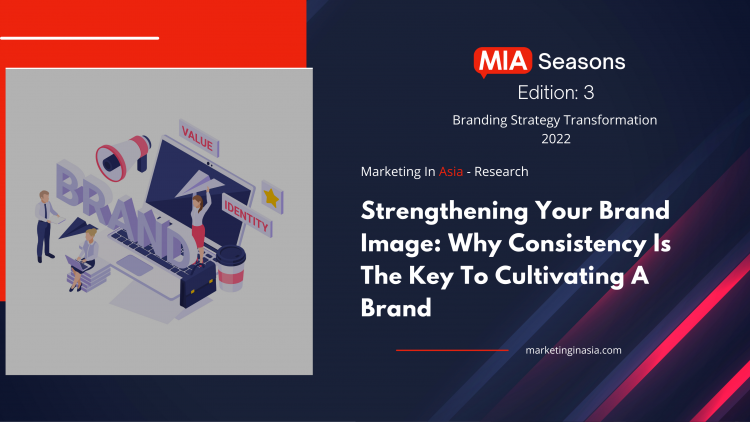When I say Coca Cola, you are quick to envision a red can with a white logo that has Coco-Cola written in cursive over it. I say Netflix, and immediately a red coloured letter “N” pops into your mind with the classic “ta-dum” at the back. This is what a brand image does. It is a dive into memory lane every time there is a mention of that brand.
Any brand becomes a “brand” when it becomes the virtual manifestation of the promise it delivers and the values it stands for, is consistent with its image and can connect with its customers in a memorable manner. And that image in the minds of its customer must be protected, nurtured, and preserved.
The benefit of brand consistency
Brand consistency is not just about being consistent with your services and customer experience. It is also about the look and feel of your brand. Had Netflix kept experimenting with its logo and sonic identity, or had Coca-Cola kept coming up with a new font style every year, do you think that a mention of these names would have clicked the way it connects now? Consistent branding gives a company a unique identity that sets it apart from its competitors in the industry.
Why work on building your brand image
Make the first impression. Business owners often think, branding is an unnecessary expense. Although it can seem costly at times, branding goes a long way in establishing your business’s intent. It reduces the cost of selling your product or services and ensures customer loyalty. According to Marketing In Asia (MIA) research, 65% of startups feel that branding is essential in forming the first impression [1]. Consumers will form an opinion of your business based on how well you present your brand. The quality of the ad, the look of the logo, the website you have, and how the office is designed. No matter how superficial it feels, these little details matter to your customers.

Image source: MIA Research Best Brand Building Practices
Gain customer loyalty. When a consumer makes a purchase, they are not just buying the product or the service but the promise you offer, and it is essential to fulfilling that promise to keep them coming back. Consistently working at building and maintaining a brand image helps strengthen the relationship you share with your customers and make your brand memorable.
Gaining visibility. Entrepreneurs have found that to have a successful startup, they need to be visible and building a brand image is all about gaining visibility. Making your brand image can put you on the map of not only customers but investors too. It will get you that investment you have been waiting for. 14% of the respondents in the MIA study said branding is vital to influence investors’ decisions.
Also read: How to develop customer loyalty and create brand loyalists
Ways to maintain brand consistency
Consistency across marketing channels helps create a visual identity for your brand that is unique to you. With the road to purchase frequently zigzagging through several channels and devices, from desktop to smartphones and tablets, eCommerce sites to mobile applications, and even brick-and-mortar stores, brand innovators & marketers are pushed to challenge the distinctions between omnichannel and multichannel marketing and ensure consistency of brand communication across the channels.
A brand communication must provide a consistent, tailored experience for customers across all channels and devices. The underlying premise is, that it must be consistent and shopper-centric.
The tablet brand ad you saw on your laptop are the same ones you saw when Instagramming on your phone, and they are the same ones you got an email about when they went on sale a week later. The messaging, designs, and banner colour, are consistent, device-agnostic, and, most crucially, tailored to your browsing habits.
According to research, presenting consistent branding increase your odds of being visible by three folds [2]. Some basics to follow are:
Sticking with monochromes. Consistent use of one colour in the logo, branding, digital content, and promotional material can help escalate your brand’s identity by driving brand recognition up by as much as 80% [3]. Only 41% of the respondents in our study agreed to use a single-coloured logo coordinated with maintaining consistency.

Image source: MIA Research Best Brand Building Practices
Using one colour palette. If a single colour does not reflect your business’s personality, define your brand colours, and stick to them. It is as simple. 63% of our respondents agreed to do this, while 68% of these accepted that as time went by, the subject took a back seat

Image source: MIA Research Best Brand Building Practices
Focusing on product packaging. It is not just about the colours but also how they make your products stand out in the market. 33% of the world’s most renowned companies use some hues of blue in their logos [4]. Packaging encompasses all the aesthetics around your product/service – having a simple yet attractive font that is crisp and legible, a consistent colour palette, using hot colours etc. – all the aspects under the packaging umbrella are the personality traits of your business that put together build a unique identity of your brand.
Conclusion
Humans are visual creatures who make decisions based on what they see. This is a compelling reason to have a brand image that leaves an imprint in the minds of the people. With the ever-changing marketplace, it is crucial to create a brand that can be consistently presented across platforms, allowing you to maximise revenue. Creating a consistent message that reinforces brand identity and core values is a surefire way to help avoid customer confusion and increase customer loyalty leading to more significant cash in, thanks to higher recall rates!
To know more about other brand-building practices – download the report.
Endnotes:
- https://mkt.marketinginasia.com/mia-research-report-best-brand-building-practices-what-experience-teach-businesses
- https://www.demandmetric.com/content/press-releases- news-coverage
- https://www.forbes.com/sites/forbesagencycouncil/2019/05/ 17/the-colors-of-branding/?sh=7645b76d6931
- https://www.designwizard.com/blog/brand-colors
















